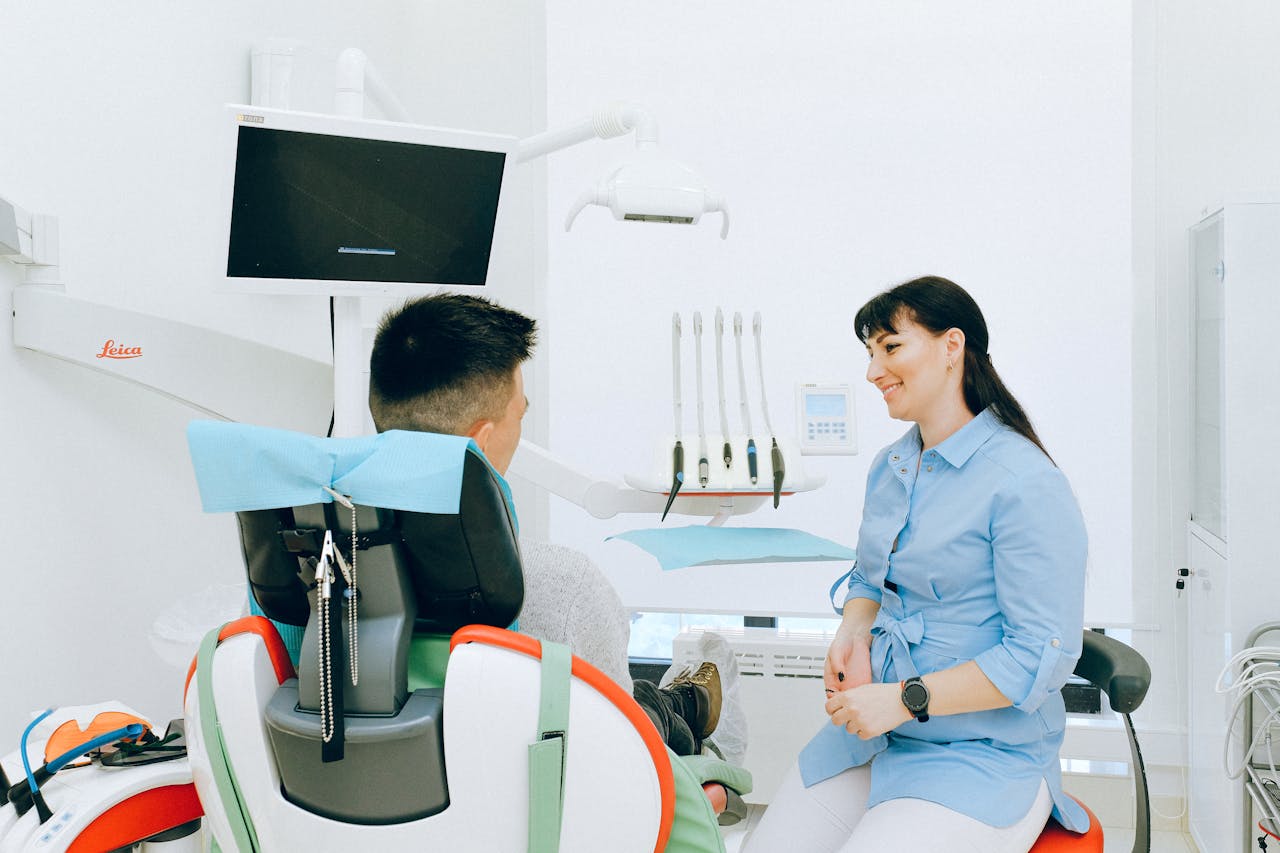Google Paid Ad Strategies For Dental Clinics In Minnesota

For Minnesota dental practices competing in an increasingly digital landscape, Google Ads offers a powerful channel to capture high-intent patients actively searching for care. However, turning ad clicks into booked appointments requires more than just running campaigns—it demands a complete system that captures every opportunity, even after hours. That's where Arini's AI receptionist for dentists becomes essential, ensuring 100% of calls from your Google Ads campaigns are answered 24/7 and converted into scheduled appointments directly in your practice management system.
Key Takeaways
- Google Ads generates qualified leads within 2-4 weeks, with an average cost per lead between $50-$85
- Minnesota's dental market shows significant geographic variation, with Twin Cities practices facing 40-60% higher cost-per-click than rural areas
- Most successful dental practices allocate 4-7% of gross revenue to total marketing, with Google Ads representing 20-40% of that budget
- AI-powered Smart Bidding strategies can help achieve 300-500% ROI through machine learning optimization
- Compliance with HIPAA regulations and ADA ethical guidelines is non-negotiable in dental advertising
1. Understand Minnesota's Dental Advertising Landscape
Before launching Google Ads campaigns, Minnesota dental practices must understand the unique market dynamics they're operating within. The state presents a diverse competitive landscape that significantly impacts advertising costs and strategies.
Geographic Cost Variations:
- Twin Cities metropolitan practices usually face a higher cost-per-click ($7-$10)
- Greater Minnesota rural areas see more moderate costs ($4-$7)
- Urban practices in Minneapolis-St. Paul typically achieves annual collections of $1.2M-$1.6M
- Rural practices range from $800K-$1.2M annually
Patient Search Behavior:
- 46% of all Google searches have local intent
- 69% of people search online before booking a dentist appointment
- 76% of local searches result in physical visits within 24 hours
Strategic Implications:
- Adjust geographic targeting radius based on location—tighter targeting (5-10 miles) in competitive urban areas, wider targeting (20-30 miles) in rural areas
- Consider targeting commuter corridors and complementary business districts
- Emphasize accepted insurance networks (HealthPartners, UCare, Delta Dental of Minnesota) in ad copy
2. Set Up Your Google Ads Account Correctly
Proper account setup forms the foundation for successful dental advertising campaigns. Rushing this process leads to tracking gaps and wasted ad spend.
Account Creation Essentials:
- Use a dedicated email address specifically for Google Ads management
- Link to Google Analytics 4 for comprehensive performance tracking
- Set up conversion tracking for key actions (form submissions, phone calls, appointment requests)
Campaign Structure Best Practices:
- Organize campaigns by location (Minneapolis, St. Paul, suburban areas, rural regions)
- Create separate campaigns for high-value services (dental implants, cosmetic dentistry, orthodontics)
- Use ad groups that align with specific keyword themes (emergency care, new patient offers, specific treatments)
Measurement Setup:
- Implement call tracking to attribute phone inquiries to specific campaigns
- Set up Google Ads call reporting to track call duration and quality
- Integrate with your Arini Analytics & Notifications Module to measure booked appointments and revenue impact from ad-driven calls
3. Master Keyword Research for Minnesota Dental Markets
Effective keyword research targets high-intent searches while filtering out irrelevant traffic that wastes budget.
High-Value Keyword Categories:
- Emergency terms: "emergency dentist Minneapolis," "toothache St. Paul," "broken tooth dentist near me"
- New patient terms: "new dentist near me," "best dentist Minneapolis," "family dentist St. Paul"
- Service-specific terms: "dental implants Minnesota," "teeth whitening Minneapolis," "Invisalign St. Paul"
- Insurance terms: "dentist accepting HealthPartners," "UCare dentist near me," "Delta Dental Minnesota provider"
Keyword Research Process:
- Use Google Ads Keyword Planner to identify search volume and competition levels
- Focus on long-tail keywords with lower competition but higher conversion intent
- Analyze competitor ad copy to identify keyword opportunities they're targeting
- Create negative keyword lists to exclude irrelevant searches (hundreds of terms recommended)
Minnesota-Specific Considerations:
- Include neighborhood names (Uptown, North Loop, Highland Park) for urban targeting
- Add seasonal terms ("back to school dental checkup," "year-end dental benefits")
- Consider weather-related emergency terms ("emergency dentist snow storm," "weekend dentist Minnesota")
4. Optimize Budget Allocation for Maximum ROI
Smart budgeting ensures your Google Ads investment delivers sustainable returns without overspending.
Budget Guidelines:
- Most dentists invest between $1,000 and $3,000 monthly on Google Ads
- Allocate 4-7% of gross revenue to total marketing, with Google Ads representing 20-40% of that budget
- Start with a conservative budget for 2-3 months to test performance, then scale based on documented ROI
Bidding Strategies:
- Use Target CPA (Cost Per Acquisition) bidding once you have conversion data
- Implement ad scheduling to reduce bids during low-conversion hours
- Apply bid adjustments for high-performing devices, locations, and demographics
ROI Expectations:
- Well-optimized dental campaigns achieve 300-500% ROI
- New patient acquisition cost ranges from $175-$325, depending on specialty and location
- The average conversion rate for dental ads is 4.2%
5. Leverage Google Local Service Ads (LSAs)
Google Local Service Ads offer a fundamentally different risk-reward profile compared to traditional PPC advertising, making them particularly valuable for Minnesota dental practices.
How LSAs Work:
- Pay-per-lead model (only pay when you receive actual contact from a potential patient)
- Ads appear at the very top of search results with a "Google Verified" badge
- Require background verification and license confirmation
- Display your Google review rating prominently
Getting Google Trust Badge:
- Complete business verification through Google's screening process
- Provide proof of business license and insurance
- Pass background checks for business owners and practitioners
- Maintain positive Google review ratings
Maximizing LSA ROI:
- Ensure 100% of inbound leads are answered immediately with Arini's 24/7 call answering
- Highlight service areas covering your Minnesota practice locations
- Maintain an active Google Business Profile with regular updates and reviews
- Respond quickly to leads—Google prioritizes practices with faster response times
6. Craft High-Converting Ad Copy for Minnesota Patients
Effective ad copy speaks directly to Minnesota patients' needs while highlighting your practice's unique advantages.
Ad Copy Elements:
- Headlines that include location and service ("Minneapolis Emergency Dentist," "St. Paul Family Dental Care")
- Description lines emphasizing unique selling propositions (insurance accepted, same-day appointments, multilingual staff)
- Call extensions with prominent phone numbers
- Sitelink extensions directing to specific service pages
- Callout extensions highlighting key benefits ("Accepting New Patients," "Emergency Appointments Available")
Minnesota-Specific Messaging:
- Emphasize accessibility and parking options (crucial for downtown Minneapolis and St. Paul locations)
- Highlight extended hours and weekend availability
- Mention accepted insurance networks prominently
- Address seasonal needs ("Year-End Benefits Don't Expire," "Back-to-School Dental Specials")
A/B Testing Strategy:
- Test different headlines focusing on price vs. quality vs. convenience
- Experiment with emotional vs. informational messaging
- Compare service-specific ads vs. general practice ads
- Monitor performance weekly and adjust based on click-through rates
7. Optimize Landing Pages for Maximum Conversions
Your landing pages must convert ad clicks into actual appointments, requiring specific design and functionality elements.
Essential Landing Page Elements:
- Clear, prominent call-to-action buttons ("Call Now," "Book Online")
- Mobile-responsive design that loads under 3 seconds
- Trust signals (reviews, certifications, before/after photos)
- Insurance information and accepted plans are clearly displayed
- Online appointment booking integration
Conversion Optimization:
- The average landing page conversion rate for dental offices is around 10%
- Only 26% of dental practices offer online booking options
- Ensure every landing page has click-to-call functionality for mobile users
Integration with Call Handling:
- Implement Arini's Call Answering & Scheduling Module to capture calls from landing pages 24/7
- Book appointments directly into your practice management system from landing page calls
- Send real-time notifications to staff for every booked appointment
8. Implement Comprehensive Tracking and Measurement
Without proper tracking, you can't optimize campaigns or prove ROI to justify continued investment.
Conversion Tracking Setup:
- Track form submissions, phone calls, and online bookings as conversions
- Implement call tracking with unique numbers for different campaigns
- Set up Google Analytics 4 goals for key user actions
Key Metrics to Monitor:
- Cost-per-click (average dental industry CPC: $6.50-$9.75)
- Click-through rate (average dental CTR: 4.69%)
- Conversion rate (average dental conversion rate: 4.2%)
- Cost-per-acquisition and return on ad spend
Advanced Analytics:
- Use Arini's Analytics & Notifications Module to track call volume, booked appointments, and revenue impact
- Calculate patient lifetime value to justify higher acquisition costs for quality patients
- Monitor appointment confirmation and show rates to understand full funnel performance
9. Comply with Dental Advertising Regulations
Minnesota dental practices must navigate complex regulatory requirements to avoid legal and financial penalties.
HIPAA Compliance Requirements:
- Never include protected health information in ad copy or form submissions without encryption
- Ensure all marketing vendors sign Business Associate Agreements
- HIPAA violations can result in fines ranging from $100 to $50,000 per violation
Advertising Ethics:
- Obtain written consent for patient testimonials and before/after photos
- Avoid making unsubstantiated claims about treatment outcomes
- Don't use terms like "pain-free" or "sleep dentistry" without proper credentials
- Follow the American Dental Association's ethical guidelines for advertising
Minnesota-Specific Considerations:
- Verify compliance with the Minnesota Board of Dentistry advertising regulations
- Ensure all practitioners featured in ads maintain active Minnesota licenses
- Include required disclaimers for specialized services or procedures
10. Integrate Google Ads with Seasonal Marketing Strategies
Minnesota's unique seasonal patterns create opportunities to maximize Google Ads effectiveness throughout the year.
Seasonal Campaign Adjustments:
- Increase the budget by 20-30% during Q4 to capitalize on patients maximizing annual benefits
- Launch back-to-school campaigns in July-August for family dental checkups
- Emphasize emergency availability during the winter months for weather-related dental issues
- Reduce budgets slightly during summer vacation months when search volume decreases
Holiday-Specific Opportunities:
- Valentine's Day campaigns for cosmetic dentistry ("Love Your Smile")
- Mother's Day promotions for family dental care
- New Year's campaigns focusing on fresh starts and dental resolutions
- Black Friday/Cyber Monday offers for treatment plans
Weather-Responsive Advertising:
- Create emergency dentistry ads that activate during snowstorms or extreme weather
- Emphasize indoor parking and accessibility during the winter months
- Highlight weekend and extended hours availability for working families
Frequently Asked Questions
Q: What is the average cost-per-click for dental Google Ads in Minnesota?
A: The average cost-per-click for dental keywords in Minnesota ranges from $4-$10, depending on location. Twin Cities metropolitan areas see higher costs ($7-$10) while rural areas experience more moderate pricing ($4-$7). Nationally, dental keywords average $6.50-$9.75.
Q: Do I need a Google Ads course to run campaigns for my dental practice?
A: While Google offers free training through Google Skillshop, most dental practices benefit from working with experienced professionals who understand both Google Ads and dental marketing specifics. The complexity of proper setup, ongoing optimization, and compliance requirements often justifies working with a dental marketing specialist, especially for practices new to paid advertising.
Q: How can I track phone call conversions from my Google Ads campaigns?
A: Implement call tracking with unique phone numbers for different campaigns, set up Google Ads call reporting to track call duration and quality, and integrate with Arini's Analytics & Notifications Module to measure booked appointments and revenue impact from ad-driven calls. This provides a complete picture of which campaigns generate actual appointments, not just calls.
Q: Should I hire a dental marketing company or manage Google Ads in-house?
A: Most dental practices benefit from professional management, especially initially. As one industry expert notes, "Google Ads isn't a set-it-and-forget-it solution. It's about analyzing data, testing, and refining your strategy for maximum impact." However, practices with staff who have Google Ads certification and dental marketing experience can manage campaigns successfully in-house with proper training and ongoing education.
Q: What role does an AI receptionist play in maximizing Google Ads ROI?
A: An AI receptionist like Arini ensures 100% of calls from your Google Ads campaigns are answered 24/7, converting every opportunity into a booked appointment. This is particularly crucial for Local Service Ads, where you pay per lead, and for after-hours calls when your front desk is unavailable. Without proper call handling, even the best Google Ads campaigns waste significant opportunities, with Arini case studies showing practices capturing tens of thousands in additional revenue monthly.









